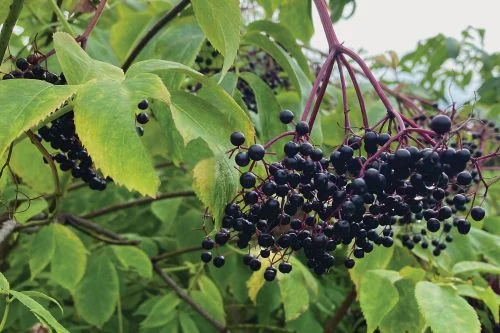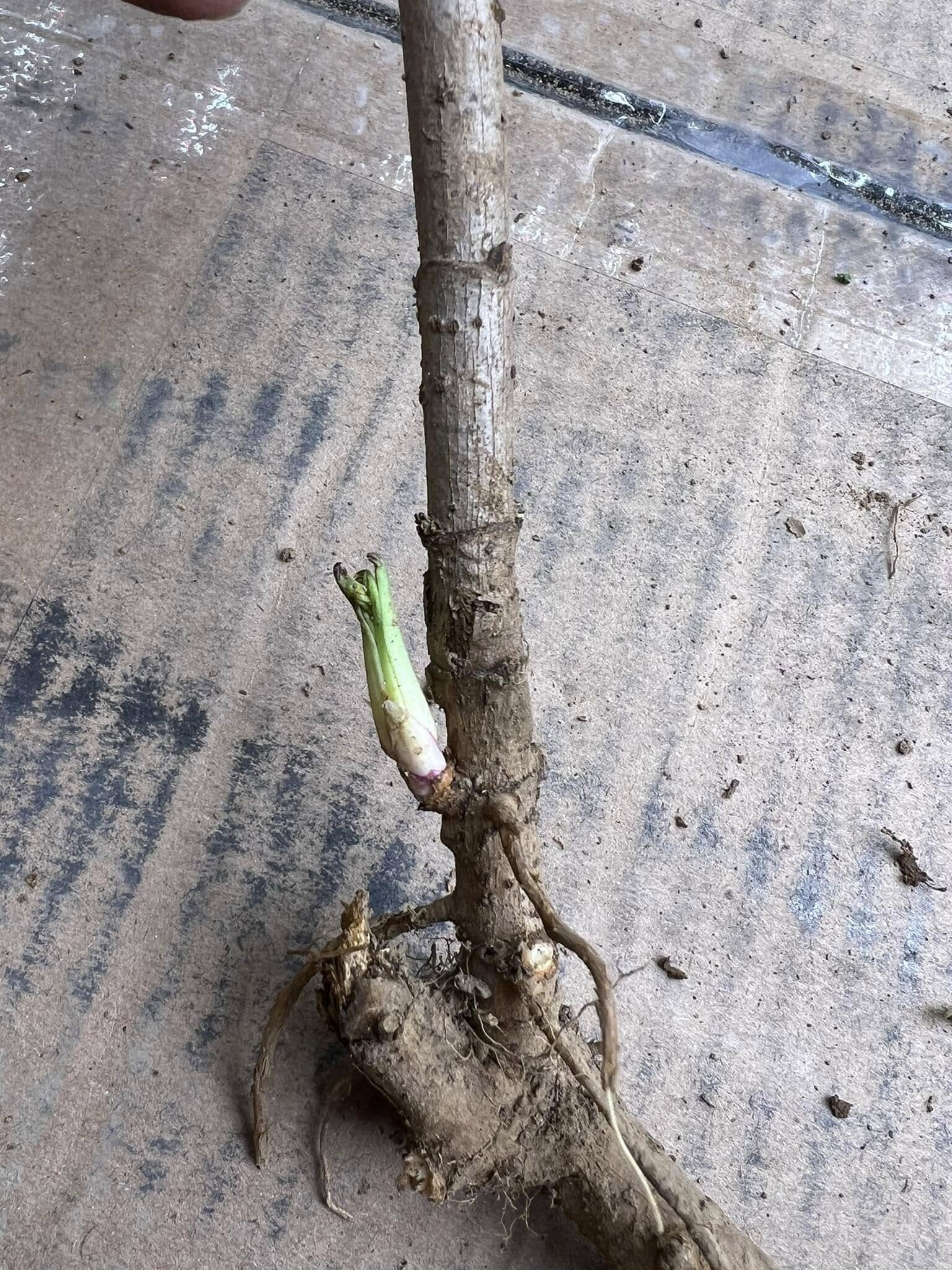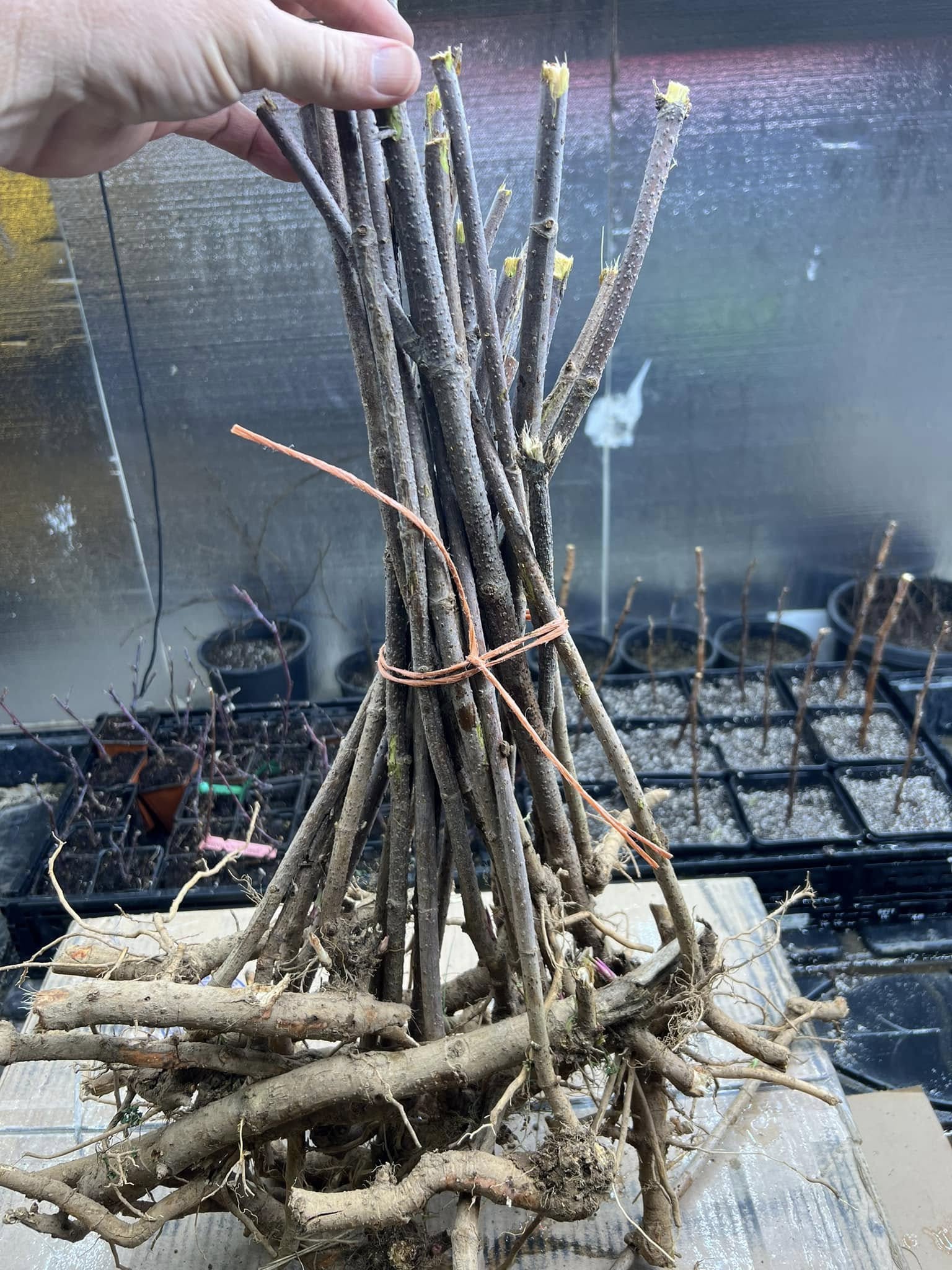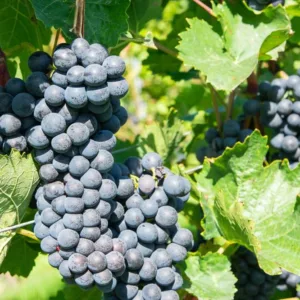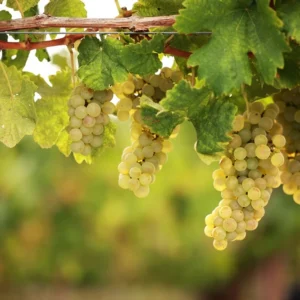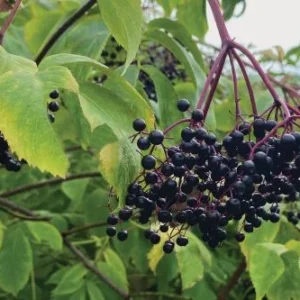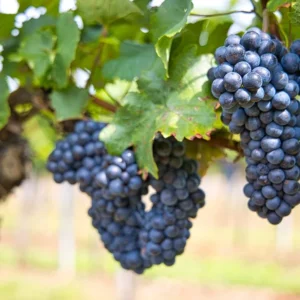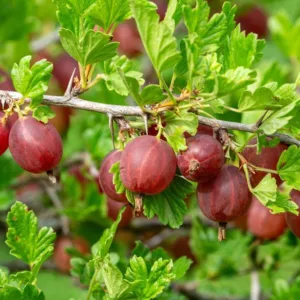Description
Johns Elderberry (Sambucus canadensis ‘Johns’) is a vigorous and productive cultivar of American elderberry, highly valued for its large, flavorful berries and robust growth habit. Selected in the early 20th century for its superior fruit size and early ripening, Johns has become a favorite among gardeners and homesteaders seeking a reliable elderberry for culinary and medicinal use.
This deciduous shrub typically reaches 10 to 12 feet tall and spreads just as wide, forming a dense thicket of arching canes. In late spring to early summer, it produces large, flat-topped clusters of creamy white flowers, which are not only attractive to pollinators but also edible. These blossoms give way to heavy, drooping clusters of dark purple-black berries by mid to late summer. Johns elderberries are notably larger than those of wild types, making them ideal for making jams, jellies, syrups, wines, and immune-boosting tonics.
Johns is not self-pollinating, so it requires a second elderberry variety—such as Adams, York, or Nova—nearby for optimal fruit production. It thrives in USDA hardiness zones 3 through 9 and prefers full sun for maximum yield. The plant tolerates a wide range of soils but performs best in rich, moist, well-drained conditions. Consistent watering is especially important during dry periods to ensure healthy fruit development.
Aside from its productive fruiting, Johns elderberry serves well in naturalized plantings, wildlife gardens, or as a privacy screen. It attracts birds and beneficial insects, adding ecological value to any landscape. Pruning older canes in late winter encourages vigorous new growth and better fruiting in the following season.
Whether grown for its berries or its beauty, Johns elderberry is a dependable, easy-care addition to edible and pollinator-friendly gardens alike.
Growth Habits
-
Type: Deciduous shrub
-
Mature size: Typically 10–12 feet tall and wide
-
Growth rate: Fast-growing
-
Pollination: Not self-fertile—you’ll need at least one other compatible variety (like Adams, York, or Nova) for good fruit production.
Flowering & Fruiting
-
Blooms: Late spring to early summer with showy white flower clusters (umbels)
-
Fruit: Very large, juicy black-purple berries, ideal for jams, jellies, wine, and syrups
-
Harvest time: Usually mid to late summer, depending on climate
-
Berry size: Larger than most native elderberries, making it a favorite for home gardeners and small-scale producers
Growing Conditions
-
USDA zones: 3 to 9
-
Sun: Full sun to part shade (best fruit yield in full sun)
-
Soil: Moist, well-draining soil; tolerates a range of soil types, but thrives in rich, loamy ground
-
Watering: Likes consistent moisture—deep watering recommended during dry spells
Other Notes
-
Johns elderberries are often used for naturalizing or creating hedgerows.
-
Wildlife-friendly: attracts pollinators during bloom and birds when fruiting.
-
Regular pruning improves productivity and maintains manageable size.

